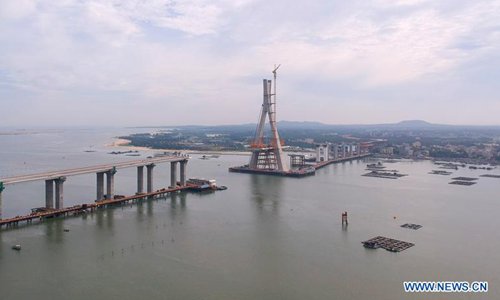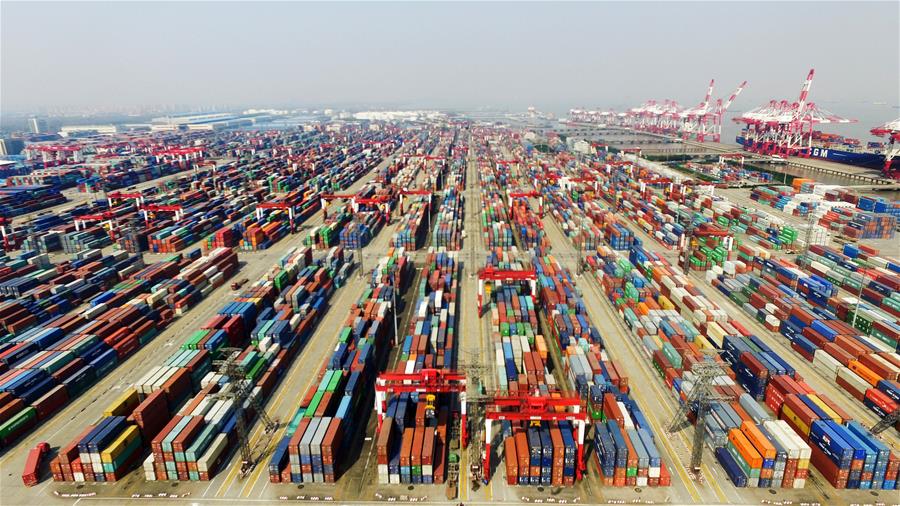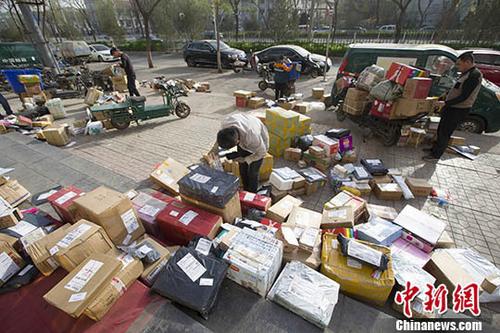By WangCong (Global Times)08:29, July 18, 2019
Officials hint at stimulus but not ‘flood irrigation’

Photo taken on May 29, 2018 shows Puqian Bridge under construction in south Chinas Hainan Province. Construction of Puqian Bridge, which provides a quicker access to Wenchang City from Haikou City, is scheduled for completion at the end of 2018. The bridge is expected to promote economic growth of the northern part of Hainan Province. Photo: Xinhua
China is mulling a balanced approach that would help keep economic growth at a stable range in the second half of the year, while avoiding opening the floodgates of stimulus that would raise debt and create more risks, after economic growth in the first half showed stabilizing signs but also highlighted persistent downward pressure.
Top policymakers have in recent days struck a calm and confident tone, pushing back against pessimistic headlines about the second-quarter growth rate, but they have also acknowledged growing pressure on the economy and vowed to keep the worlds second-largest economy stable, while continuing on long-stated market reforms.
After a strong start in the first quarter, the Chinese economy grew 6.2 percent year-on-year in the second quarter, the slowest quarterly growth rate in 27 years, dragging down growth for the first half of the year to 6.3 percent.
Economic operations remained stable overall on high bases, Premier Li Keqiang told a meeting on Tuesday.
Noting slowing global growth, rising protectionism as well as domestic challenges, Li said that the results did not come easily.
China is battling a protracted trade war with the US, with $250 billion worth of its products facing high punitive tariffs, and challenges in a transition period for the domestic economy from low-end, unsustainable development to high-quality growth.
Although growth rates in the first half of the year were low compared to previous rapid expansion, China is still one of the fastest growing economies around the world and the envy of many countries that have been struggling under slowing global growth, Chinese experts say.
The US economy, for instance, contrary to what US President Donald Trump has suggested, grew 3.1 percent – half the speed of China – in the first quarter of 2019 and is expected to slow to around 2.1 percent for the full year.
Policy continuity
Lis upbeat assessment of growth in the first half year Tuesday also showed that Chinas top leadership remains confident that they are well positioned to reach an annual growth target of between 6 percent and 6.5 percent and that a dramatic shift in macro policies is unlikely, the analysts noted.
Chinese officials have taken a slew of measures to stabilize growth, including massive cuts to taxes and fees that amount to 2 trillion yuan and what officials call proactive fiscal policies and a prudent monetary policy designed to boost investment but refrain from raising leverage.
These measures played a crucial role in stabilizing economic operation in the first half of the year, Li said, suggesting that China will continue with them.
Noting that pressures have been growing, the premier also hinted that preventive and minor adjustments at appropriate times are possible.
As pressure continues to mount, China is likely to further cut the reserve requirement ratio (RRR), the amount of cash banks are required to take as reserve, by 100 basis points in the second half of the year and even interest rates cuts have not been ruled out, according to Liang Haiming, an economist at Hainan University.
The Peoples Bank of China, the central bank, has made targeted cuts to the RRR for smaller banks to increase lending for smaller companies and the private sector, with the latest cut going into effect on Monday.
Regardless of what other people say, China has got to do what its got to do. Otherwise, the economy could be worse, Liang told the Global Times on Wednesday.
Liang referred to rising speculation that China could resort to a broad stimulus that would increase debt.
China is also likely to increase fiscal spending in the second half to stabilize growth, Liu Dongliang, an economist at the China Merchants Bank, wrote in a research note.
Proactive fiscal policy could unleash as much as 350 billion yuan ($50.9 billion) in the second half of the year and special government bonds could raise 800 billion yuan for investment in infrastructure, the note said.
Chinese officials maintained they are not resorting to a flood irrigation stimulus, a reference to those more aggressive and wasteful pro-growth policies of the past.
We are resolute about not engaging in flood irrigation and will be effective in fending off hidden risks in local government debt, Meng Wei, a spokesperson for the National Development and Reform Commission, said at a press briefing on Tuesday.
Analysts said that even without raising debt to risky levels, the combination of measures are sufficient to keep growth stable in the second half and reach 6 percent or higher for the full year, despite the challenges, including the trade war with the US.
As global headlines focused on the trade war with the US, Chinese officials and analysts also stressed that the biggest challenge for China is pushing forward with market reforms to generate high-quality growth.
The trade war has some impact but Chinas economy is not as reliant on trade as before, said Liu Ying, a research fellow with the Chongyang Institute for Financial Studies at the Renmin University of China. Now the biggest growth driver is domestic consumption and so our focus should be how to boost consumption.
![]()



